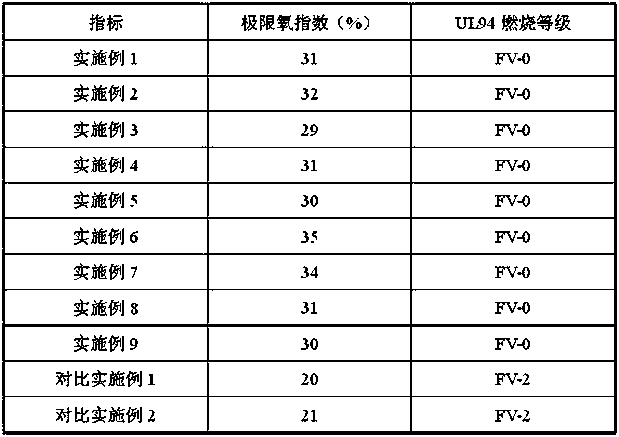Flame-retardant graphene and polyurethane composite foam material and preparation method thereof
A composite foam and graphene technology, applied in the field of materials, can solve the problems of flame retardant migration, increased viscosity of polyurethane foam raw materials, easy to be ignited and burned, etc., achieve regular cell structure, overcome poor compatibility, and improve mechanical properties Effect
- Summary
- Abstract
- Description
- Claims
- Application Information
AI Technical Summary
Problems solved by technology
Method used
Image
Examples
Embodiment 1
[0027] Example 1 A flame-retardant graphene polyurethane composite foam material is prepared from the following components in mass percentage (g / g): 20% ethylene glycol, 20% aliphatic polyester polyol, and 50% isocyanate , foaming agent 3%, triethylenediamine 2%, graphene-inorganic salt flame retardant 4%, simethicone 1%.
[0028] Among them: blowing agent refers to the mixture obtained by uniformly mixing monofluorodichloroethane and azodicarbonamide at a mass ratio of 1:2 (g / g).
[0029] Graphene-inorganic salt flame retardant refers to dissolving 60g of graphene and inorganic salt in 1L of deionized water, relying on the non-covalent interaction between graphene and inorganic salt, such as hydrogen bond, van der Waals force, electrostatic interaction The supramolecular flame retardant is formed by isointerfacial assembly, and then the solid graphene-inorganic salt flame retardant is obtained by freeze-drying. Ordinary graphene: sodium chloride: ammonium phosphate = 3:1:2 (...
Embodiment 2
[0035] Example 2 A flame-retardant graphene polyurethane composite foam material, which is prepared from the following components in mass percentage (g / g): 20% polyether polyol, aromatic polyester polyol containing aromatic ring structure 15%, isocyanate 47%, 1,1,1,3,3-pentafluorobutane 6%, N,N-dimethylcyclohexylamine 5%, graphene-inorganic salt flame retardant 6%, dimethyl Base silicone oil 1%.
[0036] The preparation method of this flame-retardant graphene polyurethane composite foam material is the same as embodiment 1.
[0037] Among them: polyether polyol refers to the mixture of diethylene glycol and ethylene glycol in a mass ratio of 2:1 (g / g).
[0038] The preparation method of the graphene-inorganic salt flame retardant is the same as in Example 1, graphene oxide: ammonium chloride: ammonium dihydrogen phosphate=2:1:2 (g / g).
Embodiment 3
[0039]Example 3 A flame-retardant graphene polyurethane composite foam material, which is prepared from the following components in mass percentage (g / g): 15% diethylene glycol, 25% aliphatic polyester polyol, 45% isocyanate, 4% foaming agent, 3% N,N-dimethylbenzylamine, 7% graphene-inorganic salt flame retardant, 1% polydiethyl silicone oil.
[0040] The preparation method of this flame-retardant graphene polyurethane composite foam material is the same as embodiment 1.
[0041] Among them: foaming agent refers to the mixture obtained by mixing diisopropyl azodicarboxylate and n-heptane at a mass ratio of 3:1 (g / g).
[0042] The preparation method of the graphene-inorganic salt flame retardant is the same as in Example 1, modified graphene: reduced graphene oxide: sodium phosphate: potassium sulfate = 2:2:1:1 (g / g).
PUM
| Property | Measurement | Unit |
|---|---|---|
| viscosity | aaaaa | aaaaa |
| hydroxyl value | aaaaa | aaaaa |
| viscosity | aaaaa | aaaaa |
Abstract
Description
Claims
Application Information
 Login to View More
Login to View More - R&D
- Intellectual Property
- Life Sciences
- Materials
- Tech Scout
- Unparalleled Data Quality
- Higher Quality Content
- 60% Fewer Hallucinations
Browse by: Latest US Patents, China's latest patents, Technical Efficacy Thesaurus, Application Domain, Technology Topic, Popular Technical Reports.
© 2025 PatSnap. All rights reserved.Legal|Privacy policy|Modern Slavery Act Transparency Statement|Sitemap|About US| Contact US: help@patsnap.com

